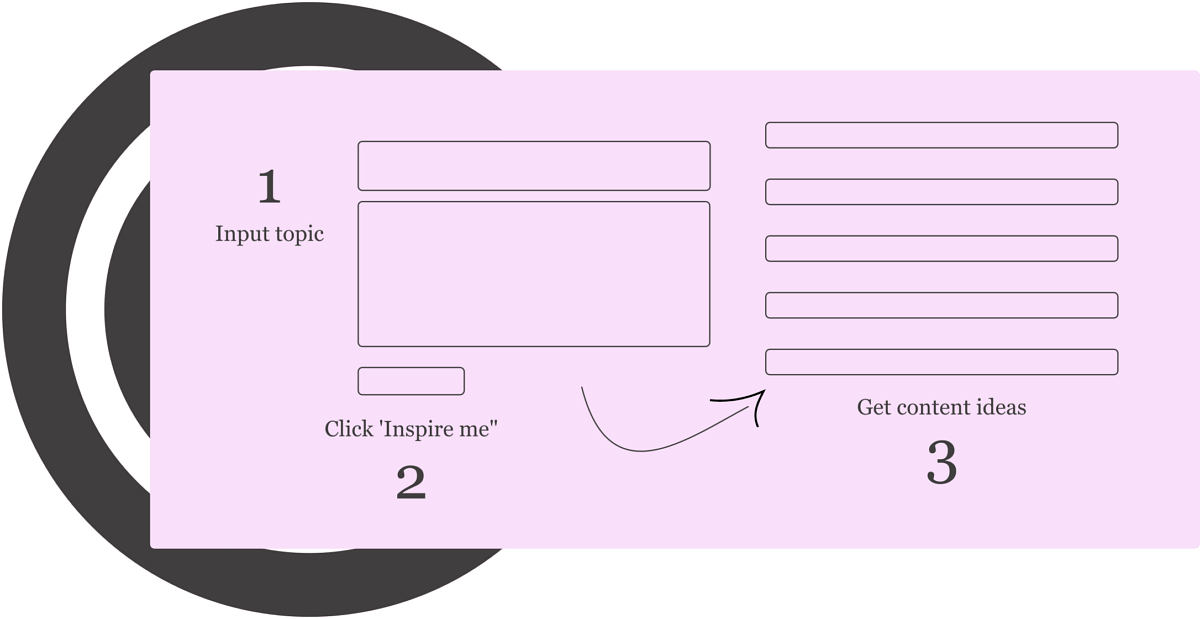
Create better copy faster — without losing human creativity — with this AI copywriting tool
By Jim James, Founder EASTWEST PR and Host of The UnNoticed Entrepreneur.
Joining me in the latest episode of The UnNoticed Entrepreneur show is Holland-based Erwin Lima who is a published author and storyteller. He’s also the co-founder of a new company called StoryLab.ai
His company uses their Artificial Intelligence (AI) tool to help you create better stories — about your company, your brand, and the services you provide — faster so you can get noticed by the right people.
Image from LinkedIn
How Do You Start Creating Stories?
A blank piece of paper is difficult. A blank screen and a cursor are no easier.
When using their tool, Erwin said that you just have to have an idea of what you want to write about. This idea could be just the name of your company or a description of the service or product that you want to talk about. Your idea could just be two, three, or five words.
Then you need to expand on that idea and describe it with one or two more lines of text. If you go into their generator, you’ll see exactly how that works.
For example, when he was trying their Google Ad Headline Generator (they also have Facebook Ad and Blog Generators), he was trying to come up with a good ad copy about how to sell the Trust gamer mouse that his son is using. He keyed in “Trust gamer mouse” in the idea or topic box of their generator. In the description box, he said that the mouse is something that gamers need to be super accurate and quick.
When he clicked on the button that says “Inspire me!,” what came back literally surprised him. It gave him two options that were decent, but one of those was pretty good: “Trust your movement.” As a copywriter who has a bunch of experience, it gave him goosebumps that the AI tool that they’ve come up with has come up with a creative headline for a gaming mouse.
A Big Help in Idea and Content Generation
For Erwin, the main thing that any AI copywriting tool can help you with is idea generation. It’s the ability to start not with a blank page but with something to go off.
Image from Storylab.ai
Many people use their tool for content idea generation. When you key in a topic that you want to write about and hit the “Inspire me!” button, it will come up with a couple of ideas for headline generation. It translates and directs your input into usable headlines.
Their tool also has a sequence called Blog Story Generator. When you click that, it will ask you to put in a topic and give you headline ideas. Upon selecting a headline, it will give you a blog intro. Once you select that blog intro, their tool will give you an outline for the blog. This really helps you in the process of creating a blog story out of nothing. You have to simply know the topic that you want to write about.
Keeping Long-Form Content Relevant
Often, AI-produced content gets farther and farther away from what you want to say the longer it becomes.
To keep long-form content relevant, Erwin shared two things. One is that the AI engine that they use is GPT-3, which is the largest natural language processing AI in the world. It does what it does really well.
In general, he remarked that their tool comes back with copy or content that is good and on-topic. However, keep in mind that the AI itself doesn’t literally understand what it’s saying and what the topic is all about. It may veer off the topic a little bit — and that’s where the second part comes in.
Erwin always advises anyone using any AI copywriting tool, especially theirs, to get something to help them start off. But still, there’s a need to keep the human element. You have to keep your own human creativity to check and balance and make sure that what the tool is saying is what you want to be saying.
Image from Unsplash
Their aim is to provide you maximum help with their AI copy generation and use it as something to create content and improve as you go along. Think of it as something that augments rather than replaces human creativity.
Analysing Content Performance
There are tools like Headline Analyser from Coschedule that allow you to evaluate a piece of content for style and engagement among others. And analysing content performance is something that Erwin and his team are working on for a handful of months now.
They’ve started creating the basic tools. His tech-savvy buddy is on the backend, pushing buttons, turning whatnots, and tweaking everything to get it to the point wherein they can guarantee a 95% quality assurance in what they provide.
In the back of their heads, they have a tangential roadmap of sorts that covers this analysis service. One of the directions that they’re heading to is to be able to give you instant feedback on the copy that you’re creating to give you an indication of how effective it can be.
Storifying Your Brand
One of the elements of my SPEAK|PR methodology is storification. But how do you pin down a story for your brand?
During the podcast episode, Erwin mentioned the hero’s journey. It’s a story structure that a lot of storytellers reference. Depending on how you look at it, it has 12 steps or has three to four phases. Erwin likes to layer it into three: Need, solution, result.
-
Need. The first step is that if you are the founder or one of the founders of a company, look at what you feel needs to be changed — what needs to be different?
-
Solution. The second step is the solution. What did you come up with? What’s the solution to the thing that needs to be changed? It could be your value proposition or your overall promise to the world. You can also talk about a product or service that you’re offering.
-
Result. The third one is the result. What does your solution bring to the world? How will it change the world? You can talk about your vision for the future or about how your brand sits in that future. You can talk about how it changes the initial problem that you saw; how you’re trying to help your customers and your audience.
Image from Unsplash
This is the most basic structure of storytelling that you can use to talk about your brand. You can then dive in and create subsections (e.g. the history of your business, your personal history as a founder, the specifics of your products or services).
From the top-level structure, you can get down into these smaller tiers, dive deeper into them, and use those to create content around every step with the help of AI tools like Storylab.ai.
Amplifying Your Content
For now, you can’t use Storylab.ai to distribute your content. You can, however, use and reuse every bit of content that you get from their tool; copy your content from their editor and paste it onto whatever platform you’re using.
On their tool’s interface, after you’ve put in your topic and a small description of it, you’ll be taken to an editor where you can edit the content generated and write more.
There are two buttons at the bottom of the editor. One says “Save,” allowing you to save whatever it is that you’ve been working on. The other button remains blank and Erwin noted that it’s something that they’re reserving for the future.
They plan to make it a connector to platforms, letting you automatically publish your content from their system to as many platforms as you like. He said that they’re not planning to put any restrictions on how you can use the content made through their tool — you’ll get it all.
Image from Unsplash
On Your Content’s Visuals
Today, text has increasingly become inadequate when it comes to generating enough engagement. Integrating multimedia within Storylab.ai is something that they’re also thinking about, according to Erwin.
Towards the slightly longer future, they’re planning the integration and easy creation of graphics off of the copy that you created through their tool. But for now, you can solely focus on your copy, texts, and words. You can create your story there and use that to go on another platform to add visuals. Because, as he reiterated, it’s important to add visuals to your story.
Storylab.ai’s Pricing
Storylab.ai is available through a freemium model pricing. This model gives you 25 AI runs each month. According to Erwin, this is already enough to help you get a feel about how their platform works for you and assess if the copy that they’ve given you is valuable.
Once you max out those 25, you can upgrade and get 250 AI runs per month at $7. To most entrepreneurs, this is something that’s already worth considering.
This economical pricing greatly plays into the Active Communications Index that I’m talking about, which emphasises content quality and consistency.
To get Storylab.ai noticed, Erwin is creating a bunch of content. Their Chief Marketing Officer also creates a ton of content by using their content generating and editing tool and their own guidelines on how to make better copy. He does marketing and search engine optimisation (SEO) so that as many people as possible get to see their content. They’re also active on social media, including Facebook, Twitter, LinkedIn, and Instagram.
To connect with Erwin, check him out on LinkedIn or Twitter. You can also visit www.storylab.ai.
This article is based on a transcript from my podcast The UnNoticed Entrepreneur, you can listen here.
Cover image created by Freepik






